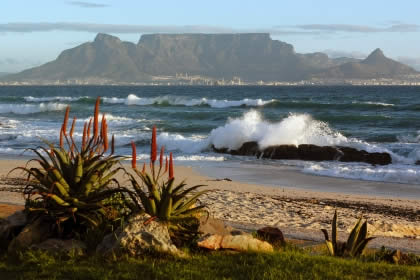It’s just 13 kilometers from the coast of South Australia, but Kangaroo Island seems a world away from the Australian mainland.
The isolation of this beautiful spot has seen flora and fauna flourish away from the threats of feral animals and diseases. Its rugged environment lures tourists keen to get back to nature.
It was discovered way back in 1802 by French explorer Nicholas Baudin. He found the island deserted, although historians have since found evidence of indigenous habitation dating back to 2250 years prior. The island was named for the kangaroos which roamed freely here, and for the tasty meal of Skippy meat the explorer enjoyed on his arrival. Slowly it became home to an eclectic mix of whalers and sealers and escaped convicts. It was once home to Australia’s most uncivilized residents, yet these days you’d hardly know it.

The Remarkable Rocks in Kangaroo Island
Kangaroo Island revels in its natural environment. Many major roads are unpaved, and national parklands and forests abound. There is no public transport, so visitors must join guided tours, bring their car over on the ferry, or hire a car when they arrive. The slower pace of Kangaroo Island does shock some visitors, although with careful planning it’s easy to embrace this back-to-basics way of life. Banking facilities are only available in Kingscote and Penneshaw, so make sure you’re cashed up before heading to the island’s outskirts. These towns, along with American River and some areas of Emu Bay, are the only ones with mobile phone reception too. While modern folks may struggle to be disconnected, there’s something lovely about removing yourself from civilization.
By maintaining its natural beauty, Kangaroo Island has become a haven for fresh produce. Seafood is plentiful in the waters, jams are made from the indigenous fruits, and the local sheep and goats make some tasty cheeses. These fresh foods make eating at Kangaroo Island’s many restaurants a wonderful experience for gastronomes.
Despite its small stature, there’s plenty to do on Kangaroo Island. Flinders Chase National Park spans across 33, 000 hectares.
It’s home to the striking Remarkable Rocks and Admirals Arch, the historic Cape du Couedic lighthouse, and kangaroos, echidnas, koalas, and the rare Cape Barren geese.
You can see more animals at Seal Bay Conservation Park, a coastal attraction where seal lions happily laze in the sun while tourists walk amongst them. Fairy penguins make a nightly procession from the waters of Kingscote and Penneshaw to the burrows on the shore. Take a flashlight and look amongst the rocks at dusk to spot these tiny birds settling in for the night.
Kangaroo Island is accessible by air and sea. You can fly between the South Australian capital of Adelaide and Kingscote by Regional Express for roughly $150 return. If you’d prefer to have your car with you, consider catching the Kangaroo Island Sealink ferry. Ferries leave three times a day from Cape Jervis on the mainland, and dock at Penneshaw. One-way fares cost $39 for passengers, and $79 for cars.
